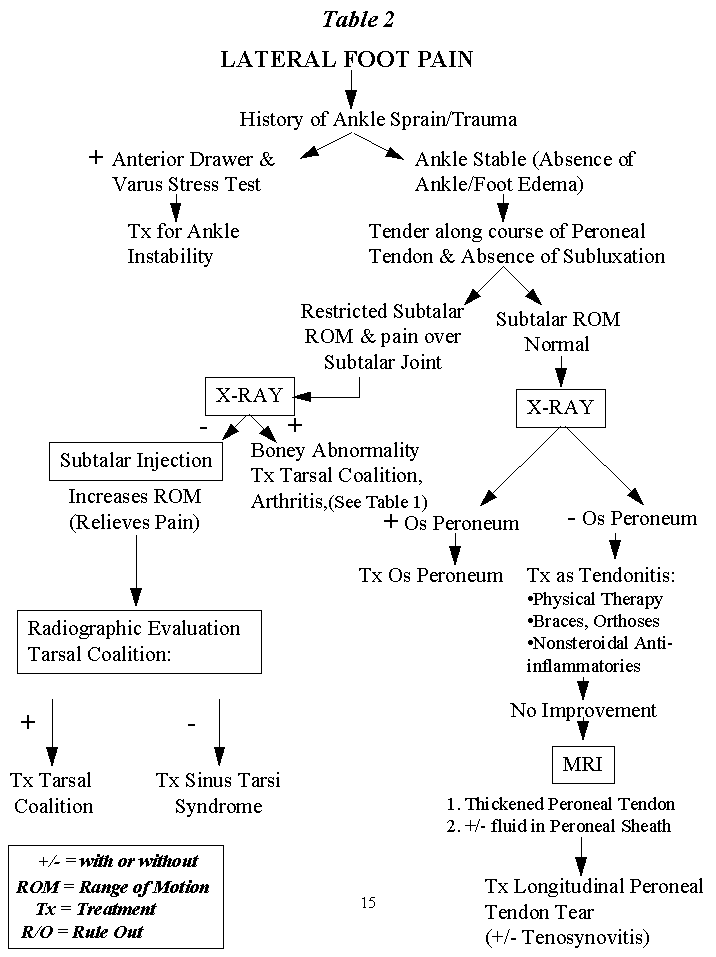

Dr. Amol Saxena, DPM
Palo Alto Foundation
Medical Group
Dept. of Sports Medicine
3rd Floor, Clark Building
795 El Camino Real
Palo Alto, CA 94301
Office: 650-853-2943
Fax: 650-853-6094
E-Mail
Map | Directions

| Foot Related Injuries & Treatments |
Ankle Sprains & Calf Strains
Question: I just sprained my ankle. What should I do? How long should I ice? How much time should I take off.
Answer: Ankle sprains are unfortunately fairly common in runners, particularly in cross country season when running on uneven terrain. However, people with high arched feet tend to have more ankle sprains because their ankles are rotated outward too far and do not roll in enough (pronate). Ankle sprains are graded on a scale of 1 to 3. Grade 1 means that you have just stretched the ankle ligaments. Grade 2 involves more swelling, stretching, and sometimes partial tearing of the ligaments. Generally, patients with a Grade 2 sprain have to take 2 -7 days off of their athletic activity. Grade 3 is the most severe type of ankle/ligament sprain and indicates that the ligaments have been torn completely or even torn off the bone. Unfortunately, swelling is not a good indicator of the severity of an ankle injury. Some patients have a fair amount of swelling in the ankle and have minimal injury; they may have just simply torn or broken the right blood vessel or torn more scar tissue. Conversely, some of the most severe ankle sprains have more swelling in the foot and toes because the ankle ligaments and joint capsules are completely torn and the fluid is essentially rolling downhill towards the toes. One of the best indicators of the severity of an ankle sprain is the ability to put weight on the foot and the ability to move the foot. If you are unable to put weight on an ankle sprain for at least a day, you should go see your doctor and get an x-ray. Sometimes patients who are chronic ankle sprainers do not do as much damage to the ligaments, but more so to other areas of the foot and ankle-such as injuring and chipping off little bones or injuring deeper ligaments that normally do not get stretched with the ankle sprain. (The most common ankle sprain is known as the lateral or inversion ankle sprain which stretches the outer ankle ligaments.) These patients can continue to ice for several days or even months after an ankle sprain and do not need to stop after 24-72 hours. Icing for 5- 15 minutes is generally all that is necessary. Note: use caution with chemical ice bags as they can freeze skin and cause frostbite. Getting an ankle brace can be very helpful. Also, some patients with wobbly ankles or high arched feet, as mentioned above, benefit from orthotic devices. Less commonly, surgery is required to repair or even reconstruct ankle ligaments, because they continue to have these joint-damaging sprains. A good physical therapist can show you several exercises and also apply other treatment modalities. If you do not have access to physical therapy or even a trainer, both of whom could show you rehabilitation- exercises and how to tape your ankle, then you may want to try the following things:
- Immediately start icing your foot.
- Use an Ace wrap to help compress the foot and ankle to reduce the swelling.
- Use crutches to ease the weight off the ankle.
- Once the pain stops, start to balance on just the sprained ankle, immitating a stork. If you are able to do this for more than 15 seconds, then gradually stretch out your arms and other leg and start waving them around to force yourself to increase your balance sense.
- Use some surgical tubing or aerobic type of exercise rubber band to strengthen your outer ankle tendon (your evertors/peroneal tendons). You can also strengthen these tendons isometrically by swinging your foot outward (in the opposite direction of your sprain) against the wall and contracting for 5 seconds and then relaxing. You can do this several times.
- Stretching your calf also helps reduce the tightness that occurs after an ankle sprain.
It is never normal to have continuous joint pain accompanied by swelling, and this should be properly evaluated with an x- ray first, followed by more sophisticated tests as necessary. Grade 3 ankle sprains are fairly severe and often require casting of 3-6 weeks. Though these are the least common, they can occur with those people who ignore repetitive grade 1 and 2 sprains. Preventive exercises, therapy, and devices are very helpful in these cases.
Ankle Strengthening, Rehabilitation, and Taping Instructions - Click Here
Question: This summer I started doing more speed work and got a severe cramp in my calf. How did I get this?
Answer: This is a "flat tire" effect or a "calf blow out" and occurs most commonly in males. Women, by virtue of wearing higher and then changing to lower heeled shoes, tend to have more flexibility and therefore more resilience in their calf muscles. Usually when someone gets a calf cramp, it is due to one of three things: 1. Changing from higher heeled training shoes to lower heeled racing flats or spikes. 2. Increasing hill or speed work. Most people do not keep hills or speed work in all phases of their training throughout the year and when they resume these workouts, the deeper calf muscles, i.e., the soleus muscles, are atrophied and have to get re-educated to get the runner back up on his toes. 3. Dehydration. One can avoid calf cramps by being properly hydrated. Unfortunately, for some unknown reason, the soleus and the other deeper calf muscles seem to cramp more than other leg muscles. You can help prevent this problem by noting the factors above, but also by doing heel raises (standing on your toes). The best way to do these are several repetitions with the knee bent, going up on your toes. Sometimes heel lifts in your shoes help temporarily. Maintaining a proper flexibility and stretching program is also very helpful. Stretching with the knee straight and and then with the knee bent is most important. One should do this before and after running. After running, using an ice cup to ice massage the calf muscle is helpful. Occasionally, some cramps are so severe they actually involve tearing the muscle. These patients generally cannot walk and should see a doctor to make sure they did not rupture an Achilles tendon. They will also benefit from a good, organized physical therapy program.
Click Here for Recommended Books on Running

Home | About Dr. Saxena | Articles | Appointments | Shoe List | Orthoses
Medial Distal Tibial Syndrome (Shin Splints) | Sever's Disease/Calcaneal Apophysitis
Ankle Sprains & Calf Strains | Injury Prevention | Heel Pain | Achilles Heel | Ankle Stretching, Rehabilitation & Taping
Return to Sports After Injury | Cycling | Marathons | Videos | Recommended Books | Links
Friends & Patients | Legal Notice | Privacy Statement | Site Map
Copyright © Amol Saxena, DPM - Sports Medicine & Surgery of the Foot & Ankle
Web Site Design, Hosting & Maintenance By Catalyst Marketing Innovations, LLC/ Worry Free Websites



